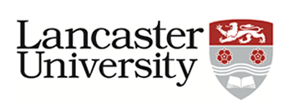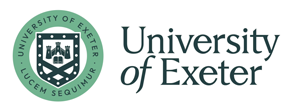大学和文理学院的区别
评估是否喜欢一所学校时,考虑的因素可以括周围环境、学校规模、各方机会、学术理念、或学生群体文化氛围。然而,学生和家长经常问我“学院”和“大学”之间的区别,以及“博雅教育(或称之为通才教育、全人教育)”的实际含义。
在美国,“学院”一词和“大学”一词经常可以互换使用。虽然两者都可以指提供四年制学士学位的学校,但学院通常只提供本科课程且规模较小。而大学则提供本科和硕/博士课程,并且通常规模更大。
现代博雅教育是一个广泛的跨学科范畴,涵盖一系列人文、社科、自然科学、和形式科学的主题:
人文学科——包括艺术、文学、哲学、语言学、历史、民族研究、和语言。
社会科学——包括心理学、法律、社会学、政治、经济学、地理学、和商科。
自然科学——包括天文学、生物学、化学、物理学、考古学和地质学。
形式科学——包括数学、逻辑学、统计学、和理论计算机科学。
有许多成功人士拿了文科学位,例如:
前迪士尼CEO执行官迈克尔·艾斯纳从丹尼森大学获得了英语语言文学学士学位。
星巴克CEO执行官霍华德·舒尔茨从北密歇根大学获得了传播学学士学位。
YouTube CEO执行官苏珊·沃西基从哈佛大学获得历史和文学双学士学位。
划分教育机构的一种方法可以是文理学院和研究型大学。
· 文理学院是本科院校,强调为学生提供广泛、全面的教育,以便学生毕业后可以具备能应用于任何工作的通用智慧和批判性思维。
· 研究型大学则侧重通过教授开展的研究来教授学生知识。大学通常由大学内的学院(英文中有时用school指代,有时用college指代)组成。通常包括(大学内下设的)文理学院或职业预科学院(不是中文意义上的技校之意,而是指为学生的特定职业道路或未来行业做准备的专业学院)。例如,一所大学可以拥有护理学院、商学院、物理治疗学院、或新闻学院。
一些学校还设有纯博雅学术课程,没有职业预科课程。另一些学校可能专注于特定的专业课程,如护理、建筑、传播学、商科等。有些学校提供一些学科组合项目,如纽约大学。纽约大学不仅拥有三个校区(纽约、阿布扎比、和上海),而且其纽约校区有17个学院提供本科、研究生、博士和特殊学位课程。
另一个例子是塔夫茨大学,该学校在本科阶段拥有三所学院:文理学院、工程学院、和美术与博物馆学院 (SMFA)。虽然工程学院和 SMFA学院专注于特定行业,但三个学院的学术要求仍然遵循博雅思想。例如,工程学院和美术学院的学生都必须在文理学院学习一定数量的课程。像塔夫茨这样的学校能给予学生各种机会:上课、开展研究,和基于学校资源选择辅修。
最后,加州大学圣地亚哥分校将其校园分为 7 个学院,每个学院都有不同价值观、使命和通识教育要求。例如,沃伦学院更注重工程,因此,大多数工程课程都在沃伦学院开设。这并不意味着加州大学圣地亚哥分校的学生被限于他们学院内的某些专业或机会;相反,他们可以利用各个学院提供的所有独特机会和资源。
在下一篇文章中,我将讨论文理学院和研究型大学之间的 6 个主要区别,以帮助学生们更好的做决定。
Evaluating whether you like a school can include thinking about its setting, size, opportunities, academic philosophies or culture of the student body. However, students and parents often ask me about the difference between "colleges" and "universities," and what "liberal arts" actually means.
In the US, college and university are often used interchangeably, but while both can refer to four-year schools with bachelor's degrees, colleges typically offer only undergraduate programs and are generally smaller in size. Universities, on the other hand, offer both undergraduate and graduate/PhD programs, and are typically larger in size.
Modern-day Liberal Arts is a broad and interdisciplinary category, covering a range of topics within the humanities, as well as the social, natural, and formal sciences:
Humanities – including art, literature, philosophy, linguistics, history, ethnic studies, and languages.
Social Sciences – including psychology, law, sociology, politics, economics, geography, and business.
Natural Sciences – including astronomy, biology, chemistry, physics, archaeology, and geology.
Formal Sciences – including mathematics, logic, statistics, and theoretical computer science.
There have also been many successful people who have graduated with a Liberal Arts degree such as:
Former Disney CEO Michael Eisner who received a BA in English Literature from Denison University.
Starbucks CEO Howard Schultz who received a BSc in Communications from Northern Michigan University.
YouTube CEO Susan Wojcicki who received a BA in History and Literature from Harvard University.
One way to categorize educational institutions is as liberal arts colleges and research universities.
· A liberal arts college is an undergraduate school with an emphasis on giving students a broad, well-rounded education so that students graduate with general intellectual critical thinking skills that can be applied to any job.
· A research university has a focus on educating students and producing knowledge through research that professors conduct. Universities are often made up of schools (sometimes, confusingly named colleges) within the university. These typically include a school or college of Arts and Sciences as well as other pre-professional schools or colleges that prepare you for specific career paths or industries. For example, a university could have a school of nursing, business, physical therapy, or journalism.
Some educational institutions have a purely liberal arts academic program with no pre-professional programs. Other schools may specialize in specific professional programs like nursing, architecture, communications, business, etc. Some schools offer a combination of these opportunities, like NYU. Not only does NYU have three campuses (NYC, Abu Dhabi, and Shanghai), but the NYC campus consists of SEVENTEEN schools/colleges that provide undergraduate, graduate, doctoral, and specialized degree programs.
Another example is Tufts with three academic schools at the undergraduate level: School of Arts and Sciences, School of Engineering, and the School of the Museum of Fine Arts (SMFA). While Engineering and SMFA focus on particular industries, the academic requirements of all three schools still follow the liberal arts ideology. For example, both engineering and fine arts students have to take a certain number of classes in the School of Arts and Sciences. Schools like Tufts allow students the opportunity to take classes, conduct research, and to minor across schools.
Lastly, UCSD divides its campus into 7 colleges, each with distinct values, missions, and General Education requirements. For example, Warren College has a stronger engineering focus, so most engineering classes will be held in Warren College. This does not mean that UCSD students are restricted to certain majors or opportunities within their colleges; on the contrary, they can utilize all the unique opportunities and resources that each colleges offers.
In my next section, I will discuss the 6 Key Differences between Liberal Arts College and Research Universities to help students make a better decision.
















